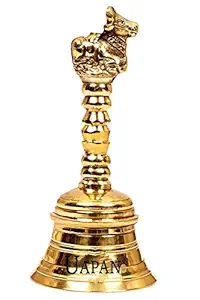મેડીએ મેલ્યો સોનાનો બાજોઠીયો
માં તારો સોના રૂપા નો બાજોઠીયો
પહેલી તે પોળમાં પેસતા રે
સમા સોનીડાના હાટ જો
સોનીડો લાવે રૂડા ઝૂમણાં રે
મારી અંબામાં ને કાજ જો
અંબિકા તારા તે ચોકમાં
ઉડે અબીલ ગુલાલ
મેડીએ મેલ્યો સોનાનો બાજોઠીયો
બીજી તે પોળમાં પેસતા રે
સમા વાણીડાના હાટ જો
વાણીડો લાવે રૂડા ચુંદડી રે
મારી ખોડીયાર માં ને કાજ જો
ખોડીયાર માં તારા તે ચોકમાં
ઉડે અબીલ ગુલાલ
મેડીએ મેલ્યો સોનાનો બાજોઠીયો
ત્રીજી તે પોળમાં પેસતા રે
સમા મણીયારા ના હાટ જો
મણિયારો લાવે રૂડા ચૂડલા રે
મારી કાલીકા માં ને કાજ જો
કાલીકા માં તારા રે ચોકમાં
ઉડે અબીલ ગુલાલ
મેડીએ મેલ્યો સોનાનો બાજોઠીયો
ચોથી તે પોળમાં પેસતા રે
સમા માળીડા ના હાટ જો
માળીડો લાવે રૂડા ફૂલડાં રે
મારી રાંદલ માં ને કાજ જો
રાંદલ માં તારા તે ચોકમા
ઉડે અબીલ ગુલાલ
મેડીએ મેલ્યો સોનાનો બાજોઠીયો
Overview of "Mediye Melyo Sonano"
Artist & Recording Details
This Garba is performed by folk artists across Gujarat; many live and recorded versions exist for Navratri nights.
Genre & Occasion
A devotional folk Garba typically sung during Navratri and special cultural gatherings.
Language & Dialect
Lyrics are in Gujarati, reflecting local dialects and expressions tied to cultural and spiritual traditions.
Popularity & Reach
Popular across rural and urban communities, this Garba is cherished for its rhythm, devotion, and cultural importance.
Lyrics Structure & Themes
Devotional Invocation
The song begins with a call to Goddess Amba, seeking her blessings for prosperity and protection.
Repetitive Chorus
Chorus lines are repeated to enhance rhythm and encourage group singing during Garba.
Imagery & Symbolism
Lyrics include imagery of festivity, vibrant colors, and traditional rituals symbolizing devotion.
Community & Togetherness
Emphasizes unity, collective celebration, and the joy of participating in Navratri Garba nights.
Emotional Resonance
Lyrics evoke happiness, devotion, and excitement among performers and audiences alike.
Musical & Performance Elements
Instrumentation & Rhythm
Traditional instruments like dhol, dholak, and hand claps provide lively rhythm and energy.
Tempo & Dynamics
Starts with a moderate pace, gradually building intensity to match the enthusiasm of Garba dancers.
Live vs Studio Renditions
Live performances include audience interaction and extended verses; studio versions are more polished and concise.
Dance Cues & Movements
Lyrics guide clapping, spins, and footwork in circular Garba formations.
Audience Participation
Encourages all devotees to sing along and dance, creating an engaging and inclusive experience.
Festival & Cultural Significance
Navratri Connection
This Garba is a highlight of Navratri, adding to the festival's blessings, joy, and energy.
Spiritual Meaning
Reflects devotion and surrender to Goddess Amba, seeking her protection, prosperity, and grace.
Cultural Heritage
Represents the preservation of Gujarati folk culture, keeping traditional Garba songs and rhythms alive.
Community Bonding
Strengthens social connections by bringing communities together through singing, dancing, and worship.
Joyful Celebration
Brings happiness, devotion, and cultural pride to all participants and audiences during the festival.
How to Use & Share
Translations & Transliteration
Provide translations and transliterations so non-Gujarati devotees can understand and participate in the Garba.
Audio / Video Embeds
Embed audio and video performances to engage users and encourage interactive listening and dancing.
Printable Lyrics & PDFs
Offer downloadable PDFs of the lyrics for personal, educational, or community use.
Performance & Dance Tips
Provide costume suggestions, Garba steps, and timing guidance to enhance live performance experiences.
SEO & Social Media
Optimize with keywords like Gujarati Garba, Navratri Garba, Mediye Melyo Sonano; add social sharing options for better reach.
This Garba is performed by folk artists across Gujarat; many live and recorded versions exist for Navratri nights.
A devotional folk Garba typically sung during Navratri and special cultural gatherings.
Lyrics are in Gujarati, reflecting local dialects and expressions tied to cultural and spiritual traditions.
Popular across rural and urban communities, this Garba is cherished for its rhythm, devotion, and cultural importance.
The song begins with a call to Goddess Amba, seeking her blessings for prosperity and protection.
Chorus lines are repeated to enhance rhythm and encourage group singing during Garba.
Lyrics include imagery of festivity, vibrant colors, and traditional rituals symbolizing devotion.
Emphasizes unity, collective celebration, and the joy of participating in Navratri Garba nights.
Lyrics evoke happiness, devotion, and excitement among performers and audiences alike.
Traditional instruments like dhol, dholak, and hand claps provide lively rhythm and energy.
Starts with a moderate pace, gradually building intensity to match the enthusiasm of Garba dancers.
Live performances include audience interaction and extended verses; studio versions are more polished and concise.
Lyrics guide clapping, spins, and footwork in circular Garba formations.
Encourages all devotees to sing along and dance, creating an engaging and inclusive experience.
This Garba is a highlight of Navratri, adding to the festival's blessings, joy, and energy.
Reflects devotion and surrender to Goddess Amba, seeking her protection, prosperity, and grace.
Represents the preservation of Gujarati folk culture, keeping traditional Garba songs and rhythms alive.
Strengthens social connections by bringing communities together through singing, dancing, and worship.
Brings happiness, devotion, and cultural pride to all participants and audiences during the festival.
Provide translations and transliterations so non-Gujarati devotees can understand and participate in the Garba.
Embed audio and video performances to engage users and encourage interactive listening and dancing.
Offer downloadable PDFs of the lyrics for personal, educational, or community use.
Provide costume suggestions, Garba steps, and timing guidance to enhance live performance experiences.
Optimize with keywords like Gujarati Garba, Navratri Garba, Mediye Melyo Sonano; add social sharing options for better reach.


